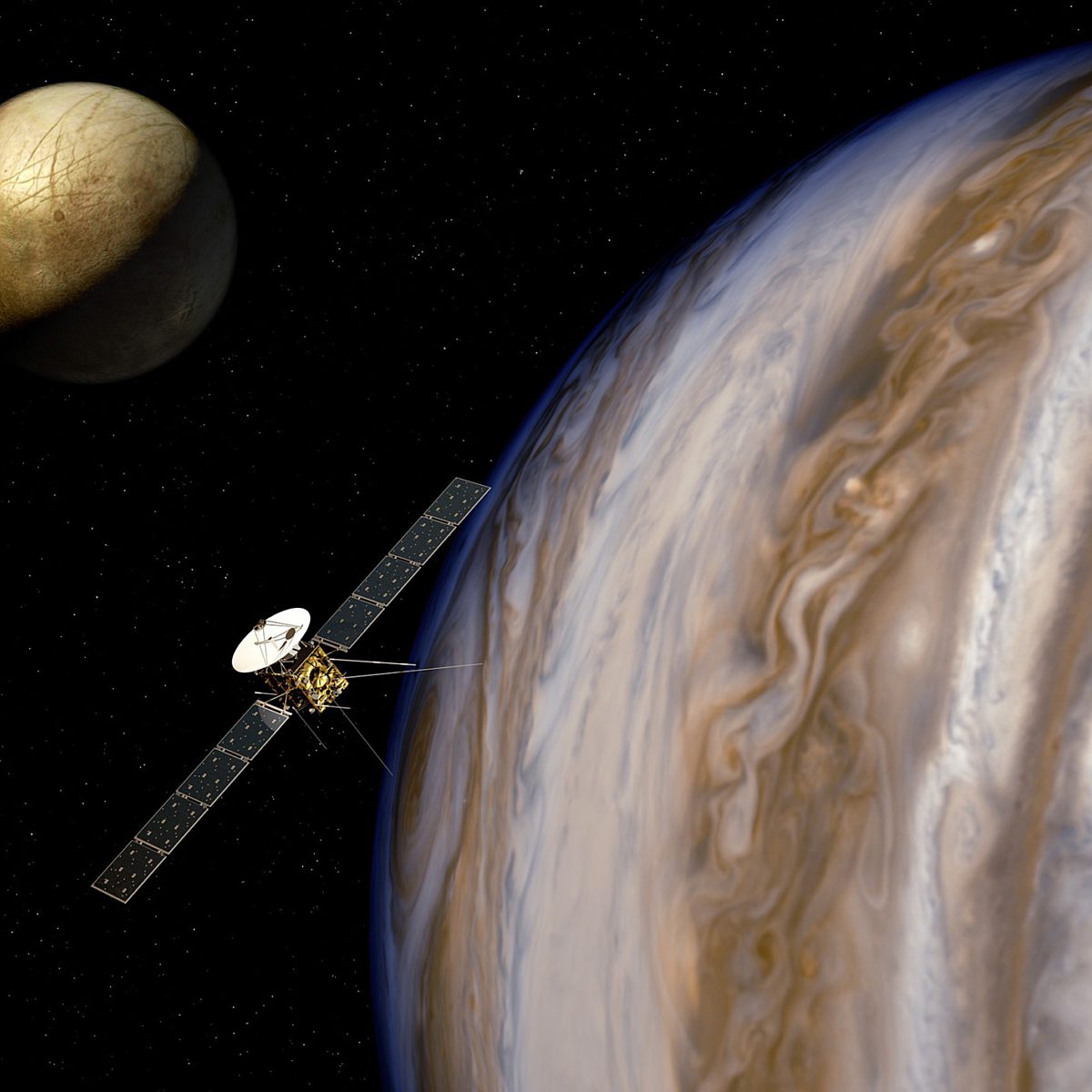All
All
Stories, updates, insights, and original analysis from The Planetary Society.
How radar really works: The steps involved before getting an image
Arecibo Observatory is known for its 1000-foot diameter telescope and its appearances in Goldeneye and Contact. Aside from battling Bond villains and driving red diesel Jeeps around the telescope (grousing at the site director about the funding status of projects is optional), several hundred hours a year of telescope time at Arecibo go toward radar studies of asteroids.
Astronomy Enters a New Era
A live conversation about just a few of the powerful new instruments that will revolutionize our knowledge of the cosmos once again.
Instruments for the JUICE Jovian Mission
The European Space Agency (ESA) announced the list of instruments selected for its JUICE mission to explore the Jovian system for three years starting in the 2030 following a 2022 launch.
Curiosity's Scoop Campaign, a Summary
Stephen Kuhn is the CHIMRA and the scoop systems lead on the Curiosity rover. He explains what the team was doing at Rocknest, and why it took so long!
SpaceX's Grasshopper makes leap toward reusability
SpaceX's Grasshopper rocket passed its most ambitious test flight yet, rising 12 stories before hovering and settling gently back down onto its landing pad.
Planetary Society Weekly Hangout: present and future rovers
The Planetary Society has a new weekly Google+ Hangout time slot, Thursdays at noon PT / 1800 UT. This week, Casey Dreier and I talked about the Curiosity kerfuffle and NASA's future rover plans. Here's the archived recording.
More than you probably wanted to know about Curiosity's SAM instrument
With all the hoopla surrounding the unknown results of the first analysis of a soil sample by Curiosity's Sample Analysis at Mars (SAM) instrument, I thought an explainer would be useful. What is SAM, what is it designed to measure, and what is the nature of its results? Here you go.
Visiting Viking at Seattle's Museum of Flight
One of the nicest aerospace museums in the United States is the Museum of Flight, outside Seattle, Washington. I traveled cross-country in order to visit the
Curiosity sol 38 update: arm tests done, on the road again, and an important question answered
Curiosity has completed Commissioning Activity Period 2 and is on the road again. I asked Daniel Limonadi to explain a couple of the photos of tests being performed on CHIMRA, and took the opportunity to ask him an amusing question that came up during a previous Google+ Hangout.
Knots on Mars
It might surprise most people to learn that multitudes of knots tied in cords and thin ribbons have probably traveled on every interplanetary mission ever flown. If human civilization ends tomorrow, interplanetary landers, orbiters, and deep space probes will preserve evidence of both the oldest and newest of human technologies for thousands, if not millions of years.
Sampling Mars, Part 4: Commissioning the Rover and Sampling System
Completing a multi-part guest blog series by Curiosity systems engineering team lead for the Surface Sampling and Science system. Part 4 explains the lengthy process of testing and using the system for the first time.
Sampling Mars, Part 3: Key Challenges in Drilling for Samples
Continuing a multi-part guest blog series by Curiosity systems engineering team lead for the Surface Sampling and Science system. Part 3 explains why drilling is hard, and what the team is doing to prevent things from going wrong.
Sampling Mars, Part 2: Science Instruments SAM and Chemin
Continuing a multi-part guest blog series by Curiosity systems engineering team lead for the Surface Sampling and Science system. Part 2 explains the science instruments SAM and Chemin.
Sampling Mars, Part 1: The Hardware
The opening of a multi-part guest blog series by Curiosity systems engineering team lead for the Surface Sampling and Science system. Part 1 explains the robotic arm and the Sample Acquisition, Processing and Handling subsystem.
See What's NEXT for Humanity
A new monthly series of Southern California Public Radio events begins with a look at how intelligent machines and virtual humans will change what it means to be a real human. Attend or watch the live webcast tonight, Thursday, August 16.
Curiosity's MAHLI camera: Much more than a microscopic imager
Today's press briefing featured the first image from MAHLI, the Mars Hand Lens Imager, so it's time for me to dive in to this camera's capabilities.
Videos: Where are Curiosity's science instruments and how do they work?
Mat Kaplan and I recently recorded a couple of videos giving a tour of the science instruments on the Curiosity Mars rover.
The Planetary Report, June 2012: Dark Skies?
The June Solstice issue of our member magazine The Planetary Report is out! The feature article, by W. Scott Kardel of the International Dark-Sky Association, looks at the ecological, economic, and philosophical problem of light pollution. My inside-the-cover Snapshots from Space features image processing work by Gordan Ugarkovic. Bill Nye's Planetary Society Kids section shows you how to build your own MarsDial, and on its back page I share some weird and interesting facts about Mars' moons.
Curiosity's seventeenth camera: MARDI
Curiosity is equipped with seventeen cameras. One of them, the Mars Descent Imager (MARDI) will capture a movie as the rover descends to the surface.
Got questions about Curiosity? I've got answers for you
Whether you are a scientist or a layman, if you have ever asked yourself any question about Curiosity, I strongly suggest that you read the newly published press kit!


 Explore Worlds
Explore Worlds Find Life
Find Life Defend Earth
Defend Earth


 Sun
Sun Mercury
Mercury Venus
Venus Earth
Earth Mars
Mars Jupiter
Jupiter Saturn
Saturn Uranus
Uranus Neptune
Neptune Small Bodies
Small Bodies













